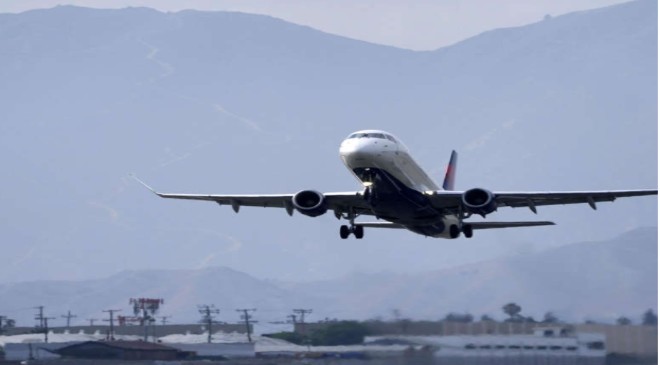Travel last summer was, in a word, wild.
Pent-up “revenge” travel combined with relaxed restrictions caused a surge in demand. High fuel prices and limited airline capacity drove up costs, with overall travel prices increasing 17% over pre-pandemic levels by June 2022, according to NerdWallet’s Travel Price Index.
Also Read- Missouri Girlfriend Getaway Ideas for Maximum Memories
What about this summer? Will weakening demand lead to lower prices and thinner crowds? It’s not looking likely, according to travel experts.
“We aren’t seeing any dip in demand,” says Hayley Berg, lead economist at Hopper, a travel booking platform. “It seems incredible that the demand could be sustained, but we’re not seeing any weakness right now.”
It seems that Americans’ appetite for revenge remains unsated. And that could lead to another wild ride this summer.
Also Raed– When it comes to the best airports, the U.S. is flyover country
No relief from high prices
Prices for flights, car rentals and hotels may have peaked last year, but they haven’t come down much.
Overall trip prices remained 15% higher in January 2023 compared with January 2020, before travel plummeted because of the pandemic.
It looks like prices could remain high through the summer, though they’re unlikely to hit the enormous year-over-year gains seen last year.
Also Read– 15 of the chicest family getaways in Europe
“We’re not seeing nearly the pricing increases we saw last year,” says Jamie Lane, vice president of research at AirDNA, a vacation rental data platform. Demand for Airbnb and Vrbo rentals remains high, he says, but increased supply has tempered price growth. “Average daily rates are up 4% year over year for the summer.”
Given the huge spikes in travel prices last year, a 4% increase is relatively modest. Airfares, on the other hand, could see a decrease in price this summer compared with last year.
Read More:- How Do Pilots Decide Their Cruise Altitude?
“We are expecting domestic airfare to peak around $350 on average,” Berg says. “That’s about 10% lower than last year but 10% higher than 2019 prices.”
Car rental prices have also abated from their absurd heights but are still 43% higher than pre-pandemic levels, according to the latest U.S. Bureau of Labor Statistics data. And food away from home (i.e., restaurant meals) has seen some of the steadiest inflation, now costing 23% more than before the pandemic.
Different booking timelines
The pandemic may be waning, but it has significantly changed how we travel.
Also Read– What Does the Banking Crisis Mean for Startups and Small Business Owners?
“What we’ve seen consistently is that people are booking a lot more last minute,” Berg says. “For domestic airfare, that’s three to four weeks in advance, where it would have been closer to six to eight weeks in advance before the pandemic.”
These short booking windows mean we won’t know how high demand for summer travel gets until, well, the summer. It could also mean that prices on transportation and lodging will rise more than usual in the final weeks before departure. Avoiding this last-minute crunch could be the budget-savvy way to plan this year.
Also Read– DOT to send proposed legislation to Congress to ban family seating fees on flights
Another trend that seems to be continuing this year: more travelers choosing to book trips during the shoulder seasons around the summer, late spring and early fall.
Lane says the shoulder season saw above-average demand last year, and so far the trend is continuing this spring. “It would start to show up if we see pacing weaker in shoulder seasons like April and May, and we’re just not seeing that.”
Also Read– What is business collateral?
Asia in the spotlight
It’s not just a matter of when travelers are booking but where. International destinations that were still closed or restricted in 2022 are seeing a boom this year.
The number of U.S. passengers leaving for international destinations was up 75% in January 2023 compared with January 2022 and up 8% compared with January 2019, according to data from the International Trade Administration, a U.S. government agency. The biggest shift has been in departures to Asia, which have seen a staggering 380% increase between January 2022 and January 2023. It’s a shift that seems likely to accelerate into the summer, according to experts.
Read More:- easyJet Launches 2024 Winter Schedule With 138,000 Flights
“Asia is absolutely one of the hottest regions right now,” Berg says. “The challenge there is that supply, direct flights from the U.S., is not back to pre-pandemic levels.”
So while a long-deferred summer trip to Japan might sound enticing, it’s likely to carry a high price tag.Big questions remain
Read More:- A small business owner with all of her money in SVB says the company was ‘jerked around’ by the ‘failures of the American banking system’
Beyond adjusting budgets to accommodate travel price changes, travelers might have other money-related concerns looking into the summer. With layoff possibilities looming and government data showing pandemic savings are dwindling and consumers piling on record credit card debt, it seems like a matter of when, not if, travel begins to slow.
Also Read– Best Buy is having a huge sale on wireless headphones – Bose and more
Will travelers tap the brakes on spending this spring, leading to thinner crowds and lower prices come summer? Or will they continue to seek their revenge travel at all costs, leading to another summer of wild travel pricing?
Also Read– Small Businesses Lost 61,000 Jobs in February
Whatever happens, savvy vacationers might avoid booking at the last minute, especially for popular summer getaway destinations. And skipping Asia, at least until more air routes become available, could help them avoid some of the heftier airfare prices.









































